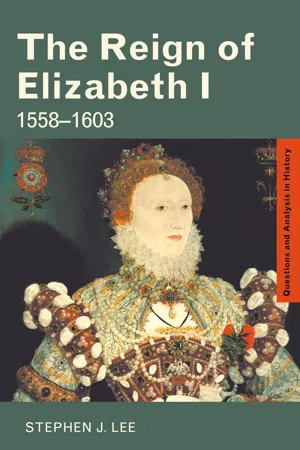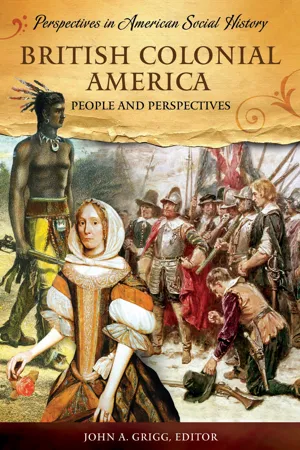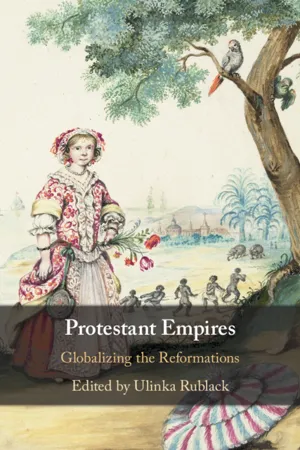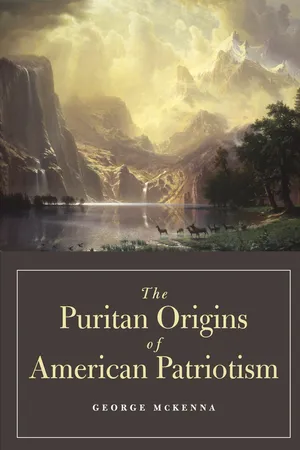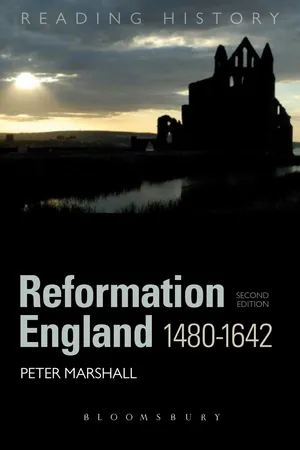History
Puritan Challenge
The Puritan Challenge refers to the religious and political movement in 17th century England that sought to reform the Church of England. Puritans aimed to purify the church of what they saw as Roman Catholic practices and beliefs. Their challenge to the established religious and political order led to significant social and political upheaval during this period.
Written by Perlego with AI-assistance
Related key terms
1 of 5
7 Key excerpts on "Puritan Challenge"
- eBook - ePub
The Reign of Elizabeth I
1558–1603
- Stephen J. Lee(Author)
- 2020(Publication Date)
- Routledge(Publisher)
’Puritanism’ therefore existed in a variety of shades and guises. What distinguished the type of ‘Puritan’ was the degree to which he or she felt that adaptations could be made to the Church of England as defined by the 1559 settlement or, to put it the other way round, the extent to which they demanded that that settlement had to be changed – by whatever means was necessary. Some Puritans did, therefore, occupy positions outside and hostile to the church. This is, however, a far cry from the large and distinct movement once seen to be a direct challenger to the Elizabethan settlement and for the soul of the later Reformation in England.Questions
- How useful is the term ‘Puritan’?
- What is the distinction between ‘moderate’ and ‘radical’ Puritanism?
ANALYSIS 2: EXAMINE THE TREATMENT OF PURITAN ‘THREATS’ BY ELIZABETH’S GOVERNMENT.Almost all Puritans considered the 1559 religious settlement, defined by the Acts of Supremacy and Uniformity, as unsatisfactory. They therefore aimed to change these and thereby reform the Church of England, although the ways in which they went about this tended to define what type of Puritan they were. The reaction of Elizabeth, her government and the church varied in response to the nature of the threat; they encountered mixed success, although the balance sheet was generally in their favour by the end of the reign.The first direct challenge was the Puritan attempt to modify the 1559 settlement through the Six Articles presented to the convocation of the church in 1563; these sought guarantees concerning the observance of the Sabbath, the positioning of the minister to face the congregation, changes to the ceremony of infant baptism, the end of kneeling at communion, the reduction of vestments and the removal of church organs. This was clearly more effectively organised and succeeded in its intention of focusing debate within the church. The Articles were, however, narrowly defeated in convocation and the church moved on to the offensive through Archbishop Parker’s Advertisements, which enforced conformity on clerical dress and ceremonies. The Queen, shaken by the threat which seemed to have been posed to the internal unity of the church, had instructed Parker to impose his and her full authority. At this stage she tried to minimise any appearance of concern by claiming that the Puritans were raising questions which were adiaphora - eBook - PDF
Realist Strategies of Republican Peace
Niebuhr, Morgenthau, and the Politics of Patriotic Dissent
- V. Tjalve(Author)
- 2008(Publication Date)
- Palgrave Macmillan(Publisher)
Fusing puritan theology with pioneer pragmatism, American political discourse must be approached as a struggle fought out within the confines of a shared ambition: to apply ideology—not refine it (Boorstein 1958: 6). European Trajectories: The Roots of Puritan Exceptionalism In this commitment to active human change, the puritans took for granted a particular conception of the individual. For human beings to be able to act on the part of God, and hence for the temporal to be intertwined with the divine, an altogether less humble notion of the capacities of human kind than that which had characterized early Christianity was required. How did this emerge? The answer begins with the Protestant Reformation of sixteenth-century Europe, more specifically with the puritan movement in Britain, and the Lutheran and Calvinist ones on the continent (Persons 1958: 4). Though in several ways an attempt to return to the classical doctrines of Augustinian piety (354–430 AD), the theology of the reformed churches—whether puritan, Calvinist, Pietist, or Methodist—must be rec- ognized as a child of the Enlightenment and the three interrelated processes of modernization this entailed (Epp 1991: 3). First of all, the Reformation marked a growing rationalization of religious life, emphasizing the need for the individual believer to perform, as a sign of faith, perpetual and systematized good works. Second, and related to this, a strengthened individualization of religious life was both the product of and a driving force behind reformist systematization, stressing the irreducibly personal nature of faith. Finally, the Reformation invoked a dramatic externalization of religion, enabling a marriage between practical and spiritual dimensions to life. - eBook - PDF
British Colonial America
People and Perspectives
- John A. Grigg(Author)
- 2008(Publication Date)
- ABC-CLIO(Publisher)
He also helped to correct perceptions of Puritans as a sour, unhappy people that had been prevalent since 19th-century author Nathaniel Hawthorne wrote his classic fiction based on them, including The Scarlet Letter (1850) and The House of the Seven Gables (1851). This chapter gives an overview of the origins and history of Puritan life from its beginnings in the political and religious revolutions in the 16th and 17th centuries, then examines several themes in American Puritan culture. 42 B R I T I S H C O LO N I A L A M E R I C A P E R S P E C T I V E S I N A M E R I C A N S O C I A L H I S T O R Y Origins of the Puritans One cannot understand the history of the Puritans in America without refer- ence to their origins during the era of religious upheaval in England in the 16th and 17th centuries. The rise of Protestantism in England can be broken down into two trajectories. The first was instigated by King Henry VIII (1491–1547) and was motivated mostly by his desire to produce a male heir and secure the future of the Tudor dynasty begun by his father, Henry VII (1457–1509). Henry VIII’s concerns were primarily political, not theological. The Church of England was created by Henry in the wake of his schism with Rome in 1531, and one of its most important consequences was an increas- ingly close relationship between church and state in England. Even though Henry cut off ties with Rome, his newly separate Church of England re- mained largely Catholic in appearance and practice, because Henry’s quar- rels with the pope were political and personal rather than theological. Though Roman Catholicism was officially outlawed and persecuted by the English government from this time on, the new Church of England was mostly un- interested in implementing major changes to its Catholic heritage. - eBook - PDF
Protestant Empires
Globalizing the Reformations
- Ulinka Rublack(Author)
- 2020(Publication Date)
- Cambridge University Press(Publisher)
I describe the theological issues in 1630s New England more fully in The Puritans, chapter 9. Puritanism in a Local Context 67 others in the new colony were willing to accept as evidence of the Holy Spirit at work in people who were seeking church membership. As this feeling spread, it reanimated a habit of the Puritan movement in England, the practice of accusing opponents of being enemies of true godliness. In 1620s England, the popular politics endorsed by the godly relied on the rhetoric of “anti-popery” – in essence, the thesis that certain bishops close to Charles I were agents of a popish plot to subvert English Protestantism. 24 This rhetoric made little sense in 1630s Massachusetts, but a rhetoric borrowed from scripture and a Spirit-edged theology was another matter. Everyone in Massachusetts recognized the sting in words or phrases that Hutchinson and her allies were beginning to hurl at their opponents. “Legal” and “covenant of works” were the most common of these epithets, alongside self-references as the party of “free grace” or the true friends of Christ. 25 Rhetoric of this kind was intentionally divisive. As those on the receiv- ing end pointed out, “it may trench upon the devils office in accusing the Brethren, and then it will be good . . . to bite one another.” And, as had quickly become evident, the authority of the ministers was being ques- tioned – in Boston in particular, where most of the congregation tried to chastise or dismiss John Wilson, Cotton’s more conservative colleague. “Now the faithfull Ministers of Christ must have dung cast on their faces, and be no better then Legall Preachers, Baals Priests, Popish Factors,” was how a witness to these events remembered the turmoil of ca. 1636–1637. 26 Hutchinson may have been a major source of this anti-clericalism. - Carla Gardina Pestana(Author)
- 2009(Publication Date)
- Harvard University Press(Publisher)
45 Massachusetts pressured 133 Religious Politics of a “Puritan Revolution” 133 other New England colonies, most notably Plymouth, to adopt its practices on specific problems such as ministerial maintenance and the punishment of heresy. The government even supported—albeit modestly—the campaign to convert Native Americans, though the program was not popular with settlers. The missions to the Indians strove not just to make the natives into Christian men and women but also to pattern them upon godly English men and women. This impulse to monitor the conduct of potential converts was in keeping with the more general drive to reform manners. Given the cross-cul-tural component of their journey into Christianity, Native Americans faced a greater challenge than did other objects of reform; the uninitiated rarely found it easy to satisfy the demands of godly reformation, however. 46 The Somers Islands and Plymouth Plantation moved during this era to-ward the sort of religious establishment that the three orthodox New Eng-land colonies boasted. Plymouth had not originally pursued a reform agenda, although others in the region recognized its churches as broadly orthodox. Plymouth’s unique history helps explain its initial lack of attention to this project, so dear to the founders of Massachusetts, New Haven, and Connect-icut. The religious separatism of some of the first settlers, their experience as exiles in the tolerant Netherlands, the tenuous legal basis for the settlement, and the presence of a large number of “Strangers” in the plantation all dis-couraged the creation of a vigorous polity supporting reform. By 1650, how-ever, Plymouth was prepared to move in the direction charted by some of its neighbors.- eBook - PDF
- George McKenna(Author)
- 2008(Publication Date)
- Yale University Press(Publisher)
It is in these places, among the spiritual and in many cases the physical heirs of the Puritans, that the claim of America’s ‘‘mission’’ is most likely to be questioned and even derided. This astounding volte-face has been mentioned by com-mentators as ideologically diverse as Whittaker Chambers, Thomas Frank, and Kevin Phillips—each putting it in his own idiom—yet never explored within the larger context of American cultural history. ≥∑ It will be in this book, particularly in chapters 8 and 9. But this is to get ahead of ourselves. The plan of this book is to follow the course of Puritanism, both in terms of its cultural influences and the way it has been viewed over several periods in American history, from its own period in the seventeenth century up to our present times. The treatment is thus chronological, though some chapters may cover a long period of time and others may be limited to a decade or two, depending on how much change was wrought in the Puritan core during a particular time period. As is obvious, the book covers a wide expanse of territory. In tracing the Puritan narrative through more than 350 years of American life and in movements as varied as abolitionism, the Social Gospel, and Reaganism, I have had to make decisions as to what to include and what to leave out. For example, I would have liked to have included more about the Populist movement in the 1890s, but Populism was a phenomenon largely confined to the South and the trans-Mississippi West, areas quite marginal to the Puritan migration. I did introduce Populism into the discussion of politics in the 1930s (chapter 6), and for this reason: the Democrats, who had been influenced by the Populists, married Populism to the Progressivism they had acquired after the demise of the People’s Party in the early 1900s. In tracing the influence of a single factor in American political cul-ture, an author must necessarily give short shrift to others. - eBook - PDF
- Peter Marshall(Author)
- 2012(Publication Date)
- Bloomsbury Academic(Publisher)
54 53 E. J. Bicknell, A Theological Introduction to the Thirty-Nine Articles of the Church of England (2nd edn, London, 1925), p. 278. 54 Winship, ‘Freeborn (Puritan) Englishmen’; Nicholas Tyacke, ‘Puritan Politicians and King James VI and I, 1587–1604’, in Thomas Cogswell, Richard Cust and Peter Lake, eds, Politics, Religion and Popularity in Early Stuart Britain: Essays in Honour of Conrad Russell (Cambridge, 2002); Nicholas Tyacke, ‘The Puritan Paradigm in English Politics, 1558–1642’, Historical Journal , 53 (2010); David R. Como, ‘Radical Puritanism, c. 1558–1660’, in John Coffey and Paul C. H. Lim, eds, The Cambridge Companion to Puritanism (Cambridge, 2008). Protestantism and Puritanism 1559–1625 141 Paradoxes also attend another ‘unifying’ characteristic of English Protestantism, its intense anti-popery. Few Protestants in the period lost sight of the fact that their real enemies were the pope and his minions, backed by the massed forces of the Catholic powers abroad and a fifth column of papists at home. If they were ever tempted to forget, events would periodically remind them: the rebellion of the Catholic Northern Earls in 1569; plots to depose and assassinate Elizabeth in 1571, 1584 and 1585; the Spanish Armada in 1588; the Gunpowder Plot in 1605. There is no doubt that on one level the task of combating the popish threat ‘promoted general Protestant solidarity’. 55 Endless tomes of anti-Catholic polemic were produced in this period, by Puritans and conformists alike. Attacking Rome in print was a way that ‘moderate Puritans’ in particular could simultaneously discharge their godly conscience, and demonstrate their loyalty to the regime. 56 Even at the height of his conflict with Whitgift, the exiled Cartwright was recruited by a consortium of Puritan divines to produce a confutation of the recent Catholic translation of the New Testament.
Index pages curate the most relevant extracts from our library of academic textbooks. They’ve been created using an in-house natural language model (NLM), each adding context and meaning to key research topics.
